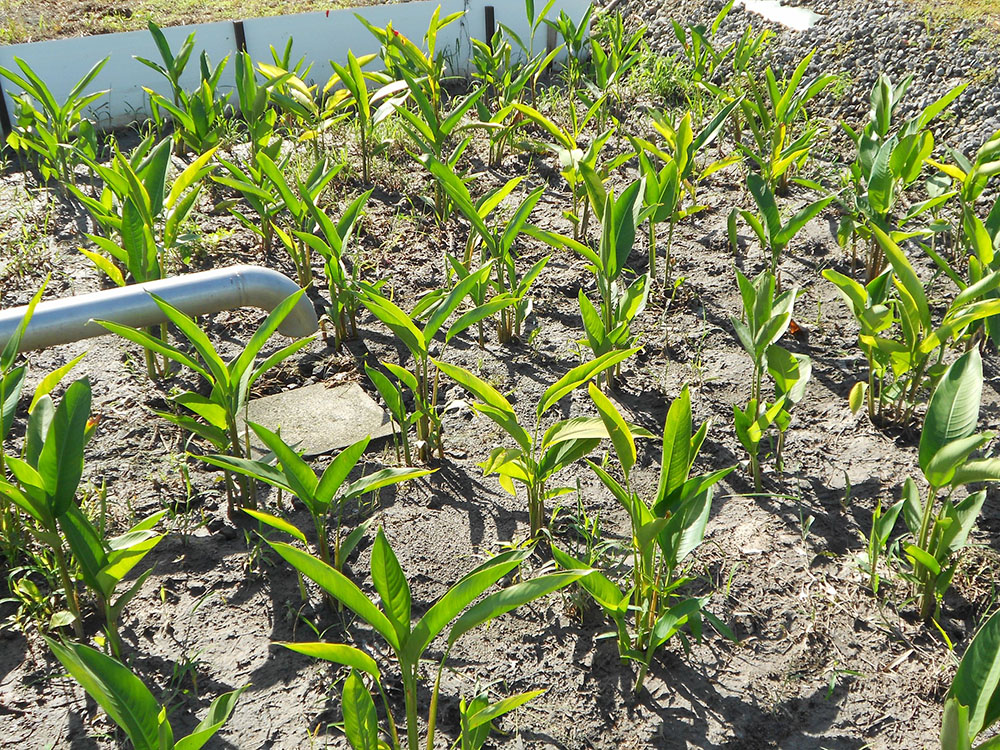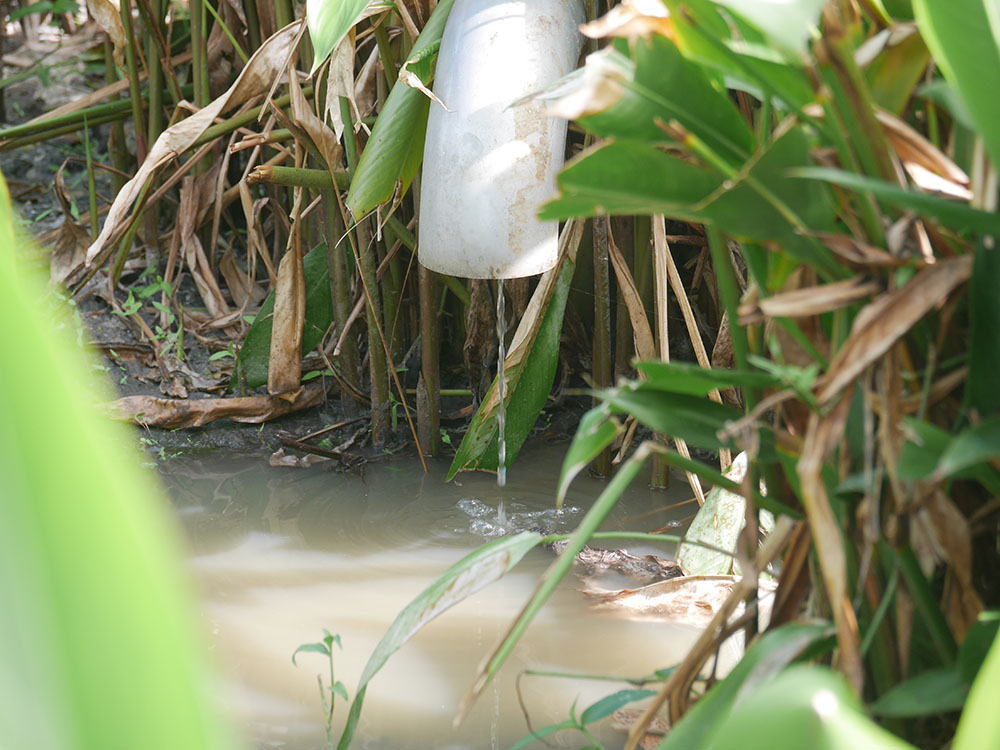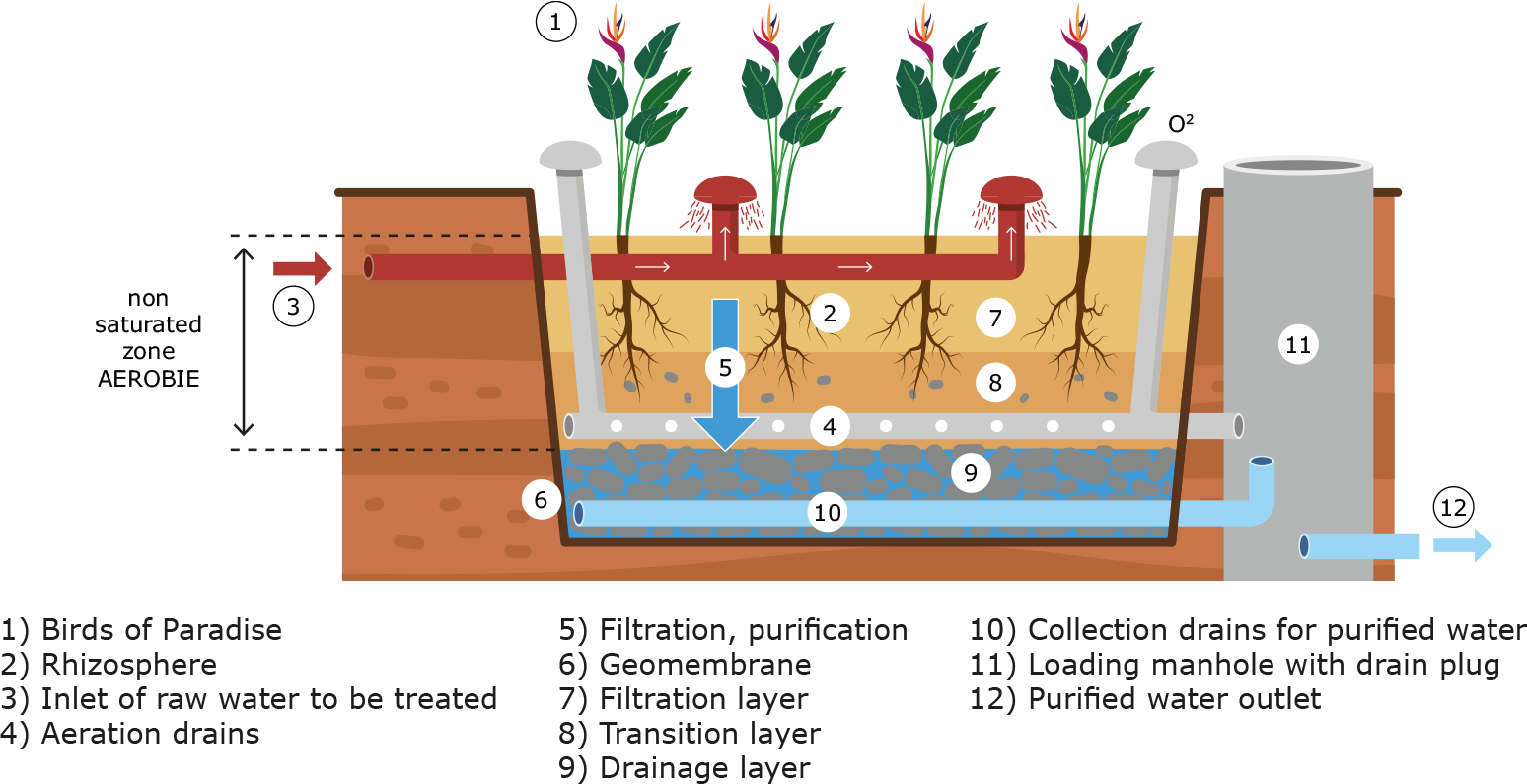History
Treatment wetlands are inspired by the natural treatment capacity of wetland ecosystems introduced in Germany in the 1960’s – 80’s. In the 1980’s, what we know now as INRAE (the French National Research Institute for Agriculture Food and Environment) started experiments in order to determine the dimensioning rules for what would then become the French system. Its originality relies on its ability to treat wastewater and sludge at the same time in the same vertical flow aerobic system, which produces a deposit that can be used in agriculture.
INRAE’s work in the tropical area started in 2005 in partnership with the French overseas territories. The Attentive project in the West Indies was awarded the ecological engineering prize in the "Alternative wastewater and rainwater management" category by the Minister of Ecology, Sustainable Development and Energy. This acknowledgement of treatment wetlands should facilitate its acceptance by local decision-makers. For example, it took nearly 15 years in metropolitan France for the number of treatment wetlands to take off.


Many Types of Treatment Methods are Possible
Treatment wetlands constitute a family of varied processes depending on flow types, saturation levels, etc., and their associations among themselves or with conventional methods provide a multitude of possible treatment methods.
The French system, which is part of the constructed wetlands family, is original in that the filters are fed with raw water, allowing for combined treatment of water and sludge in the same installation. It is currently the most popular treatment system for small communities in metropolitan France.For more information: Constructed wetlands for domestic wastewater treatment under tropical climate.
Guideline to design tropicalized systems
Vertical Flow Treatment Wetland in Tropical Environment
Vertical flow treatment wetlands are graded gravel beds, isolated from the grounds with an aeration and drainage network running through them, and plants planted on them.
These are treatment systems in which several processes interact (filtration, biological activity, flows, gas transfers, plant activity, etc.) and whose long-term performance depends on the achievement of equilibrium conditions. For this reason, both the design and the management must be carried out with full awareness.One of the keys of treatment wetlands’ success in metropolitan France is their operation’s simplicity: with little or no electromechanical equipment, and therefore no electricity if the topography allows it, the operator's tasks are simple and the risks of breakdowns are low. The maintenance of the plants is more constraining in the tropical areas and is the main task to be completed by the operator.
The range of possible use of treatment wetlands is wide: from semi-collective structures for housing estates or isolated towns to medium-sized urban centres.


